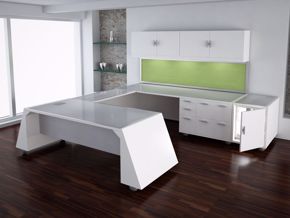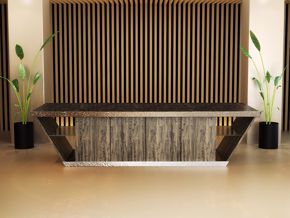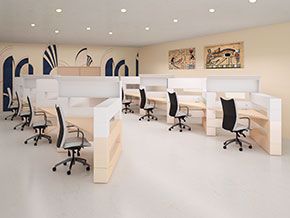A modern reception area that looks great is something many companies want these days. Making it compliant with the American Disabilities Act, however, is something many companies know little, if anything, about.
The American Disabilities Act was written into law in 1990, and provides user-friendly accessibility guidelines to make it easier for those with disabilities to access your workspace. ADA regulations are applicable to many private and public spaces. The idea is that everyone, regardless of who they are, should have a fair opportunity to work and/or live comfortably.
In the case of your office layout and presentation, every design detail sends a message to onlookers that you are intentionally taking care of everyone visiting your company.
The law was not intended to create a financial burden for small businesses. Some companies are exempt, and other rules may vary. A business that employs fewer than 14 full-time workers—and companies that have been in business for less than 20 weeks—do not yet have to comply.
When buying a modern reception desk, please keep in mind that it must have a designated height of 34" in order to create a space for visitors in wheelchairs to access the receptionist. There must also be clearance for wheelchairs to gain access to the workspace in order to provide equal-opportunity employment. Desk height for workers should be a minimum of 27" high so they do not bang their knees into the furniture.
At 90 Degree Office Concepts, we offer an electric hi-lo option workspace for modern reception desks that adjusts very easily.
Your reception area needs to have clear aisle space to make it easy for a wheelchair to fit through (32").
All doorways entering and exiting your reception area should be a minimum of 32" wide—enough space to accommodate those on a scooter or in a wheelchair.
Flooring should not make it difficult to manually push a wheelchair through (i.e., thick carpets or rugs that are not securely fastened to the floor).
Post signs and visual aids (for example, to guide people in and out of the space). Many companies find TV screens and videos helpful.
The American Disabilities Act provides clear instructions for how to become ADA-compliant; however, the idea is to be empathetic, and to think through how to make your company a friendly place to visit and work. A bit of thought and common sense can go a long way toward letting your visitors know they are welcome.










